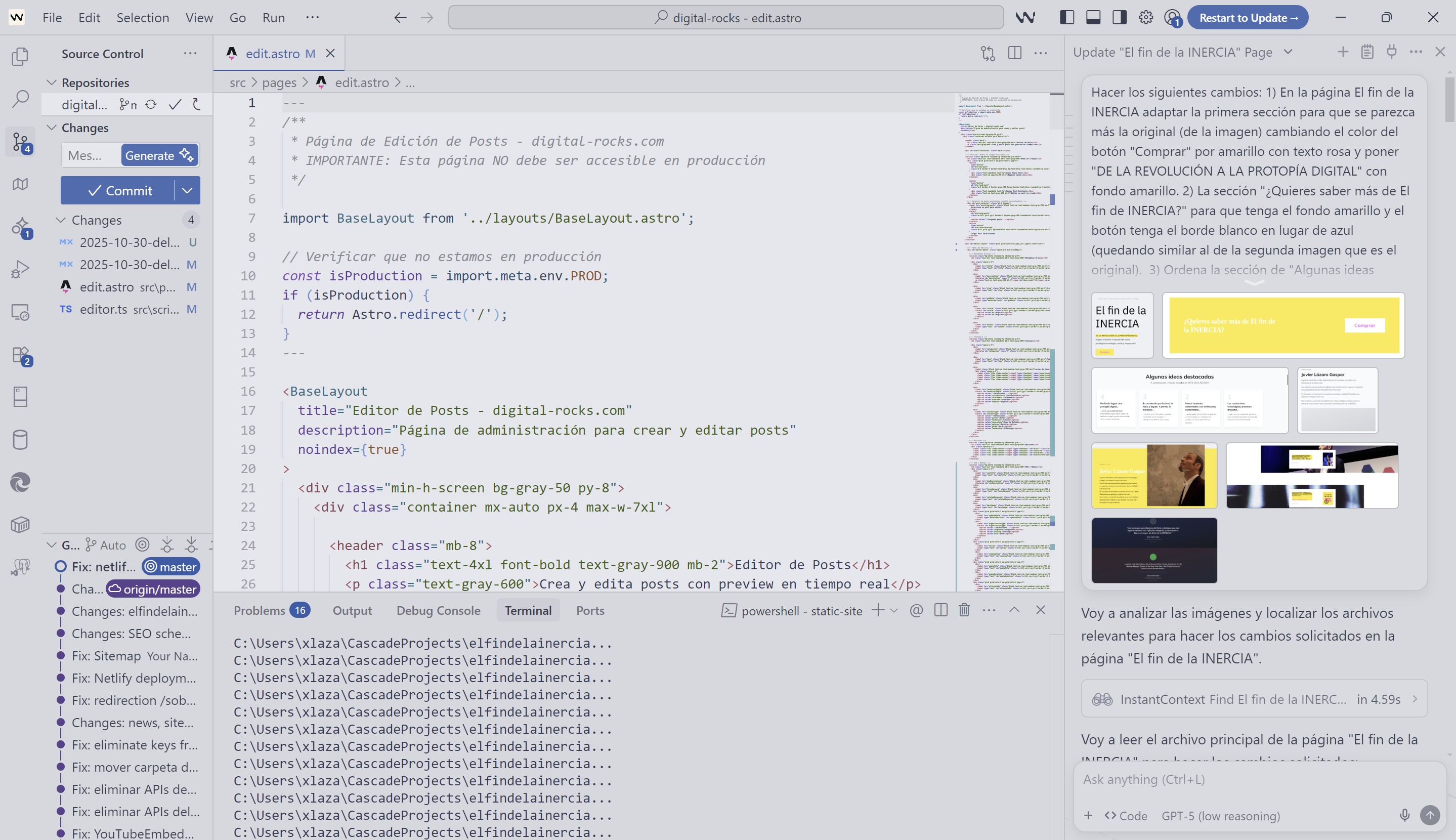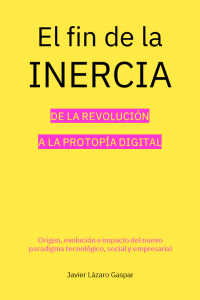The Human Side of the Digital Revolution

We have never had such clear goals or had the necessary technology to achieve them as we do now. At this moment, Humans augmented by Machines and guided by Data can reach almost any Ideal, or can they?
In this post, I want to start a reflection on whether technology brings us closer to a better world or distances us from it. On the International Day for the Eradication of Poverty, why are we not able to make more progress in this regard? What role does technology play and what role do we play? This is the Human side of the Digital Revolution.
Humans, Machines, Data, and Ideals (HMDI)
To begin with, I would like to introduce the acronym HMDI (Humans, Machines, Data, and Ideals). An acronym I use in “The End of INERTIA” to describe the forces driving the ongoing change. HMDI represents the combination and collaboration of Humans and Machines using Data to achieve a goal, vision, or Ideal. In HMDI:
-
I interpret Humans as agents whose interests and values have changed radically in recent decades. As consumers, citizens, users, and employees who value experiences in a different way, often prioritizing experiences over the products or services that provide them. These humans, us, aspire to a better world, we are the protagonists of change, and, although we may sometimes doubt it, we determine the direction of this change.
-
With Machines, we can talk about all those technologies with enormous transformative power. We can talk about 3D Printing that will allow us to “print” products instead of moving them; drones that will allow us to transport people and goods; Blockchain that will bring trust in the future of the Internet; etc. But we also have enough technology to generate energy from the earth, sea, and air or even from the vehicles that use it. Also, technology to extract drinking water from underground, rain, the sea, and even the air. Our machines are becoming more powerful and efficient every day. These machines enhance our capabilities more and more each day.
-
By Data, I take a broad interpretation incorporating technologies that enable their processing for decision-making, whether manual or automatic. From sensors (which, for example, allow a vehicle to perceive its surroundings) to Artificial Intelligence (which in the same example directs its movements making it autonomous). Artificial Intelligence and, above all, Machine Learning play a leading role.
-
However, having all these capabilities without a vision or an Ideal is sterile. We need objectives, visions, and ideals that determine the direction of our actions, both individual and collective.
HUMANS augmented through technology (MACHINES), guided by DATA should allow us to achieve almost any IDEAL. That’s why I believe HMDI (Humans, Machines, Data, and Ideals) is the key that explains the exciting moment we are living in.
The Ideal of a better world (the “I” in HMDI)
I understand Ideals as human aspirations both individual and collective. When talking about collectives, we can think of families, towns, cities, countries, etc., but we can also think of organizations or companies. In an organization, its Ideal is its long-term vision and translates into short-term objectives that should bring it closer to that vision.
Thinking about companies, in last year’s post “KODAK VS FUJIFILM: Digital Transformation focused on capabilities” I exemplified the importance of having a vision and leveraging capabilities for transformation.
That’s why in this post, I want to remember the Ideals that unite us. As I write this post, October 17, 2021, is the International Day for the Eradication of Poverty and the news reminds us that we have 283 million poor people in the world.
So:
- Does anyone not want to end extreme poverty?
- Who disagrees with fighting against inequality and injustice?
- Does anyone not want to solve the problem of climate change?
- Who doesn’t want to definitively end COVID-19?

Ideals: Sustainable Development Goals
The Sustainable Development Goals (SDGs) of the UN’s 2030 Agenda address the main problems with the aim of changing the world for the better.
Despite how clear these objectives are, data shows that we are not making progress in them at the speed we should. Data also allows us to predict the serious consequences of not achieving them and simulate different scenarios.
There are many explanations, but none suggest that we lack the appropriate technology to achieve them. We are Humans augmented by technology, the cooperation between Humans and Machines is undeniable, making it possible to achieve previously impossible goals.
The Human factor (the “H” in HMDI)
Humans, Machines, Data, and Ideals (HMDI) are the forces that converge and determine the impact of the Digital Revolution. A Digital Revolution that can lead us to a better world. Humans are omnipresent, not only in the H (of Humans) but they are the ones who create technology (Machines), determine the use of Data (D), and set Ideals (I).
The trend among technologists is to forget about people, about the humans who drive and use technology. It is reasonable, machines are more predictable and simpler than humans, but the reality is that without considering the human factor, everything lacks meaning.
Next, I will show a recent example.
The example of COVID-19 Apps
Since March 2020, if there was one clear goal, it was to defeat COVID-19.
Testing, contact tracing, and selective confinement seemed to be the necessary tools to achieve what was called “flattening the curve,” and technology seemed like a tool that could help.
In all countries, technological initiatives were launched to track the evolution of the pandemic and try to take the most appropriate measures in a situation of extreme uncertainty. In Spain, for example, administrations, telecommunications companies, and mobility operators collaborated to carry out these analyses. In the United States, technology startups such as Foursquare or Cuebiq collaborated in California and Denver respectively.
Tracking individual movements through telephone networks allowed us to understand the degree of compliance with the confinement measures, offer globally comparable data, understand the effect of different decisions, and provide an indicator of the state of each economy. This was not something new; for example, in 2019, the National Institute of Statistics of Spain bought aggregated data from telecommunications companies to analyze citizens’ mobility patterns.
At that time, it seemed reasonable to use our mobile phones to identify each of us’s virus exposure level and use it as an effective mechanism to control the pandemic. Despite the controversy regarding data privacy, administrations’ interest in contact tracing applications like RadarCOVID in Spain increased.

RadarCOVID: traceability app
And its failure due to the human factor
These applications were supposed to allow tracking citizens, the virus itself, and notify each of us of our exposure level. However, their level of use was not as expected, firstly due to citizens’ distrust regarding the use of that data, and later due to the lack of coordination among administrations that addressed the problem as something local rather than the global challenge we were facing.
Thus, we have cases like Singapore where the application became a key piece in the success of its strategy to “flatten the curve,” and others where it had a marginal role.
In Singapore, in December 2020, 80% of the population were TraceTogether users, their COVID-19 application. Meanwhile, over 70% of Americans declared their reluctance to share their personal data with such applications, and in Spain, the challenge was addressed individually by each Autonomous Community.
Individuals’ distrust in the administration was confirmed when, in January 2021, TogetherTrace, Singapore’s application, changed its privacy policy to allow the police to use the data in criminal investigations.
Despite the failure, in most regions, of these Apps, technology was not the problem. The ideals were clear, and the data directed us in the right direction. However, it was impossible, what went wrong?
What happened shows how technology is unable to add value without humans who trust it despite having a clear and fundamental goal. Without considering the Human factor of HMDI, Machines and Data show little value despite having an Ideal.
In the future, adding technologies to these solutions that increase trust and security may be a decisive factor for acceptance.
A space for optimism
Currently, we have technologies that were unthinkable some time ago, technologies that allow us to get closer to almost any Ideal. We also have real-time data that allows us to understand what is happening, predict what will happen, or simulate what may happen based on our actions. We start from Ideals based on knowledge of the world’s main problems.
Although collaboration between Humans and Machines should help us achieve their fulfillment, the reality is that we are still far away. Achieving these goals requires cooperation among humans, not only between humans and machines. Cooperation is needed between governments, companies, international organizations, world leaders, and individuals.
Contrary to what we might think, it seems that cooperation among humans is more complicated than between humans and machines.
When we are bombarded with advertisements for a dystopian future that blames technology as the origin of all social ills, we must consider whether this is not an excuse to justify ourselves. To distance ourselves from our responsibility and the discomfort of having to make decisions.
In any case, we can be optimistic because we have an opportunity to get closer to fulfilling our deepest ideals. It is not an always unattainable utopia, but a step forward towards a better world every day.## The End of INERTIA
“If utopia lies on the horizon, I take two steps, it moves two steps away, and the horizon moves ten steps further. So what is the use of utopia? That’s what utopia is for, for walking.”
Eduardo Galeano
Every step on the path brings us closer to protopia, the achievable utopia.
References
Here are the references used in this post:
- UN; SDG Agenda 2030
- RadarCOVID Information
- Digital-rocks: Kodak vs Fujifilm
- [Digital-rocks: Community and Technology against Coronavirus](http://Digital-rocks: Comunidad y Tecnología frente al Coronavirus)
You can also find more information on how technology and humans are redefining businesses and society in “The End of INERTIA,” an informative essay on technology and its impact.
Wolfmother
If you have made it this far, thank you.
I leave you with the Australians Wolfmother who will take us to their own “Dimension.”
Related posts

From COBOL to Agentic AI: Transforming the Software Lifecycle
Evolution of the software lifecycle applying AI and Agentic AI

Digital Transformation: Beyond Technology
In Digital Transformation, purpose and culture are more important than technology itself.

PROTOPÍA: get familiar with the term
> "Let's avoid the DYSTOPIA (...) > "Let's avoid the DYSTOPIA (...)
All opinions expressed on this blog are personal and do not represent those of any company or organization with which I collaborate.


